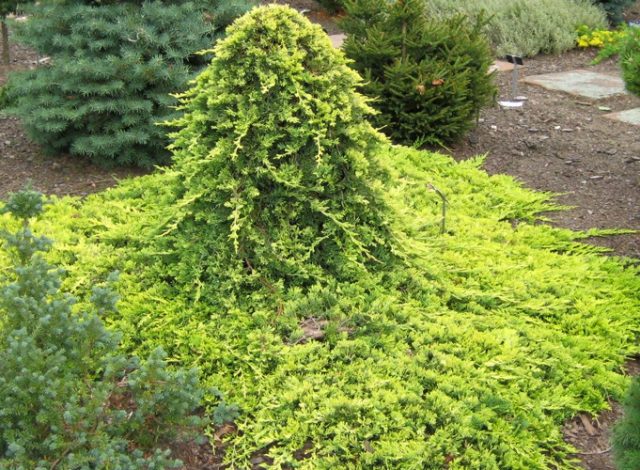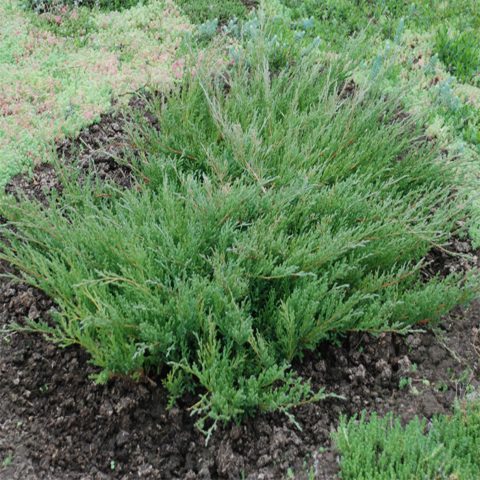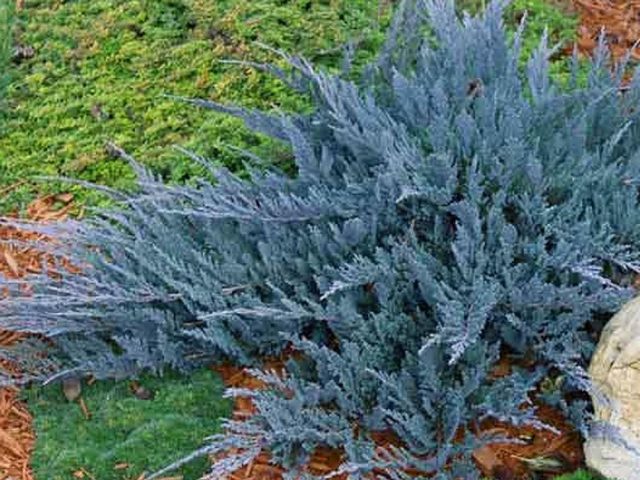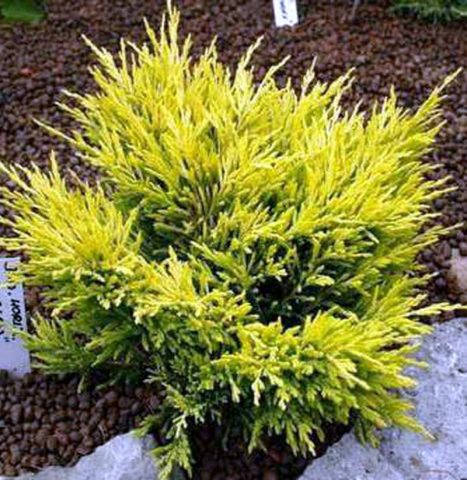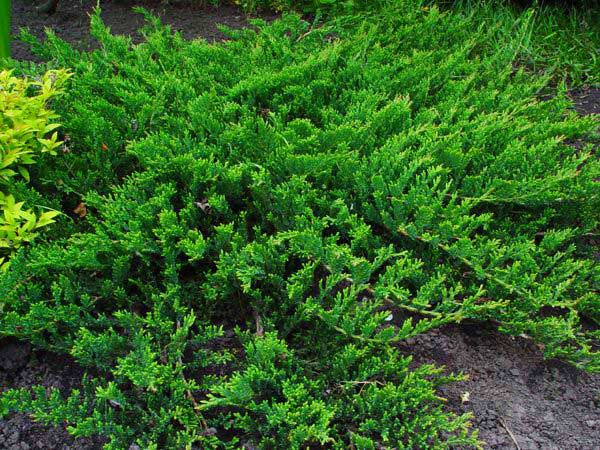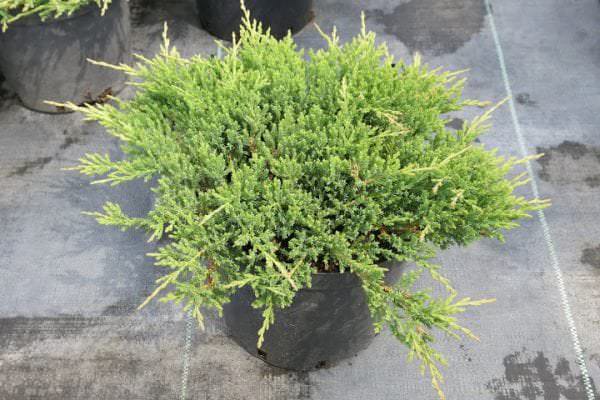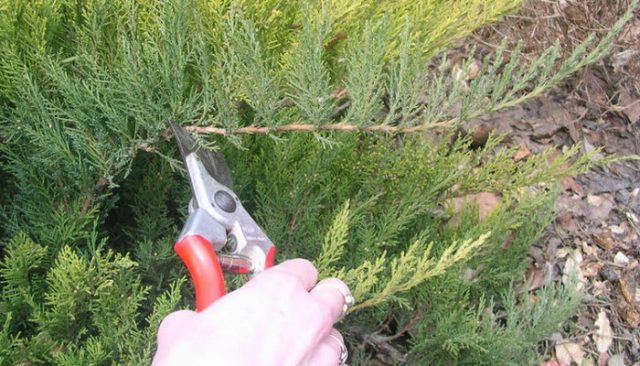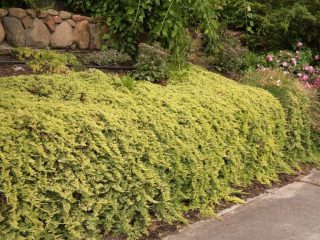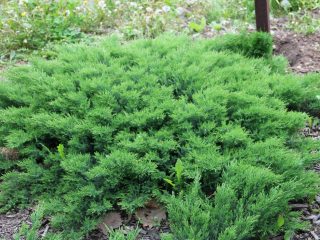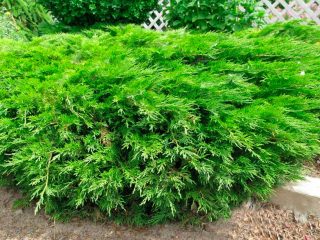Content
The creeping juniper is considered a dwarf shrub. Has a rich resinous odor, reminiscent of needles. Thanks to phytoncides in the composition, it cleans the air Kills pathogens within a radius of 3 m. The variety of shapes and shades allows you to create interesting landscape compositions with evergreen crops.
Description of creeping juniper
The plant is an artisanal type. The height is 10-40 cm, and the diameter can reach 2-2.5 m. The branches grow and spread along the ground. No foliage. Each branch is covered with short needles or scales. The color of the needles is pale green.
This group includes horizontal and creeping junipers. This type is used to create decorative slopes, low curbs, growing in hanging pots. The creeping shrub can easily adapt to any soil in which it has been planted, even in rocky terrain.
Types of creeping juniper
There are 60 known cultures that belong to creeping junipers, examples are below in the photo. Outwardly, they are all alike. Low stem size unites creeping shrubs. They may differ in the structure of the needles, color, size.
Andorra Compact
Densely branched shrub. The maximum height of the shrub is 40 cm, the width is 2 m. The color of the shoots is brownish-green. Brown bark. The surface of young branches is even; adults have cracks. The type of needles is scaly or acicular. Its structure is soft, pleasant to the touch. The needles are not wide and tightly pressed against the branches. In summer, the creeping juniper is green, and in winter it turns purple.
Blue Chip
In 1945, the creeping variety was bred by the Danes. Skeletal shoots are rare. In shape, the bush resembles a five-pointed star. The ends of the branches tend vertically upward. This form of juniper has a raised middle. The needles are predominantly needle-like, sometimes scaly. The color is grayish blue. There are thorns on the shoots. This soil shrub reacts negatively to excess moisture. Landing in sunny areas is recommended.
Limeglow
Creeping juniper with yellow needles. The bush is compact. The shape of the crown resembles a vase. The needles are feathery. The color changes during the season, turning orange by winter. It grows slowly. Fruits are rare. The variety does not tolerate excessively wet soil. Photophilous. Frost resistant. The shrub is resistant to diseases and pests.
Prince of Wales
The combination of the upper layers with the lower ones gives a deep green color. The height of the creeping shrub is 30 cm, the diameter is 2.5 m. The plant is characterized by slow growth. The form is creeping. The bark is red-gray. The needles are scaly, dense, rich green. Calmly reacts to frosts and sudden changes in temperature. Mostly planted in open areas for greater decorativeness.
Juniper creeping in landscape design
In landscape design, creeping juniper is included in the number of decorative single plantings or acts as an integral part in group compositions. Elegantly evergreen shrubs look against the background of snow. Low-growing varieties are planted on rocky hills, rock gardens, to fix the slopes. Creeping plants grow within 3-4 years, creating a visual appearance of a green carpet.
Creeping juniper is beautifully combined with conifers. Various shades and textures are appreciated by designers of street compositions.
Growing conditions for creeping juniper
Evergreen creeping shrubs grow well in sunlit, open areas. If it is planted in the shade or near a wall with weaving plants, then decorative properties will be lost. The bush will become loose and the color pale. The plant will lose its beauty. Sluggish, diseased branches will appear. For partial shade, common creeping juniper is suitable.
Planting and caring for creeping juniper
Horticultural crops require standard care. It takes root quickly. Hardy. Grows easily in urban environments. Varieties of creeping juniper give a small increase per year, about 5-7 cm. In an environment with optimally selected conditions, an evergreen shrub has a life expectancy of 600 years.
Preparation of seedlings and planting area
It is preferable to buy planting material of creeping juniper in containers (clearly in the photo). Then boarding is possible at any time. Creeping bushes at the age of 2-3 years are suitable for planting in open ground. The young plant should not have any traces of rot or fungal diseases. Roots that are in a closed form adapt faster in space and grow. If there are dry or damaged shoots, then they should be pruned. The lateral branches and apex are cut by ½ the growth length.
The choice of soil depends on the variety of creeping juniper. Basically, the shrub grows well in sandy, loamy, alkaline soils. Prefers a large predominance of peat in the soil. Heavy soils are not suitable for cultivation.
For rapid growth and rapid development, you can use the substrate: coniferous soil, peat, sand. All components are required in equal proportions. The indentations are prepared 23 days in advance or on the day of planting.
How to plant a creeping juniper
Creeping juniper is usually planted in spring or mid-autumn. When planting a plant in another period, slow development and poor survival are observed. In order not to damage the rhizome in the process, the creeping bush is planted with a lump of earth.
- Dig a groove. The size of the pit should be 2-3 times larger than the root system.
- The depth is provided for at least 70 cm.
- Drainage from gravel or crushed stone is laid out at the bottom. Layer thickness 15-20 cm.
- A creeping juniper seedling is placed in the center of the recess and sprinkled with earth.
- Sprinkle abundantly with water.
- Mulching of the periosteal circle is carried out.
Keep your distance when planting creeping shrubs. The distance between the creeping bushes is made at least 1 m.Otherwise, one plant will lay on top of another, creating a shadow.
Transfer
When choosing a successful site for a coniferous shrub, it should be borne in mind that an adult horticultural culture does not tolerate a change in location. Therefore, the creeping juniper is planted on the most successful, according to the gardener, site. Otherwise, the plant will start to hurt, it will stop growing for a long time, yellowing may be possible on some branches. A transplanted creeping bush may not survive wintering and wither away.
Watering and feeding
Young animals are watered regularly, but not abundantly. During periods of long absence of rain, the bush is watered once every 7 days.The creeping juniper is a drought-resistant plant, therefore, water procedures are carried out three times a month. In the heat, the procedure is performed early in the morning or in the evening. Spraying of the bush is also carried out.
Creeping juniper is fertilized in the spring season. Use nitroammofosku in the amount of 20 g per 1 sq. m. It is possible to use other complex preparations for feeding conifers. In September, a fast-growing creeping juniper bush is fed with fertilizers with phosphorus and potassium.
Mulching and loosening
The trunk circle should be regularly cleaned of weeds. Mulching will help to cope with this problem. The procedure helps to retain moisture in the soil. Natural material for mulch: pine chips, needles, gravel. They are to be laid on black geotextiles. Minimum layer 5 cm.
After watering, a dense crust is formed on the ground, which does not allow the root system of the creeping plant to "breathe". The loosening procedure is necessary to saturate the soil with oxygen, eliminate weeds... With a chopper, raise the top layer of the soil shallowly so as not to harm the roots.
Preparing creeping juniper for winter
For the winter, creeping junipers are sheltered, which are not more than 4 years old. They choose burlap and spruce branches for this. In conditions with a cold climate, they protect grown bushes from frost by tying them with twine. This will strengthen and not break the crown under the weight of the snow.
Pruning creeping juniper
Pruning is a must-have way of caring for a juniper, which also has a decorative function.
Is it possible to cut creeping juniper
Pruning creeping juniper is possible and even necessary. If you do not cut the shrub, then for 3 years after planting, the crown grows, and the shrub takes on an untidy appearance. The timing of the procedure is not strict. The best times will be April and September. The plant loves pruning, so it can be done throughout the year, except for the period of active growth. It is also not recommended to prune the shoots in frosty weather.
Juniper creeping undersized is sheared twice a year or as needed. There are 2 types of trimming. Sanitary cutting - removal of dry, damaged, frozen shoots. Thus, they monitor the density of the bush. The second type is formative pruning. It is carried out at the discretion of the gardener, if the natural form of an evergreen creeping culture does not fit, then different geometric shapes are given to the juniper.
How to prune creeping juniper
Shrub trimming algorithm:
- Bare branches, uncovered with green needles and without dormant buds, are removed completely from the stem.
- More than 1/3 of all greens cannot be cut off in one procedure. Otherwise, it will be difficult for slow-growing creeping junipers to recover.
- It is not necessary to make slices of wood across, as they take longer to heal and do not look aesthetically pleasing.
- The garden clipper must be sharp and disinfected.
- Most varieties of creeping junipers contain toxic substances. Gloves should be worn to protect hands while trimming.
- Open cuts on the bushes are treated with garden varnish.
- To make the crown thicker, you need to cut off 1/3 of the growth of the current year.
- At the end of the procedure, the creeping varieties are nourished with useful substances, and also treated with a fungicide solution.
How to propagate creeping juniper
The reproduction process is possible in 3 ways: by layering, seeds and cuttings. The first two methods are used extremely rarely, especially the seed method. Only breeders can grow an evergreen creeping shrub from seed, because seedlings are expected to appear three years after planting.
The main breeding method of creeping juniper is cuttings. Parts of the shoots are cut from a bush that is at least 8-10 years old. The length of the handle is 10-15 cm.The needles are removed from the shoot 5 cm from the cut, while the bark must be left. For rapid root formation, a branch of creeping juniper is dipped in a stimulating solution for 30 minutes. Then the cuttings are planted at a slight slope into the ground. Cover with plastic wrap and put in a dark place. It is important to observe the following microclimate parameters:
- temperature + 19-20 ° С;
- moderate substrate moisture;
- constant spraying with warm water;
- diffused lighting.
Roots appear after 30-45 days. At the age of two or three years, creeping juniper can be planted in the ground.
Diseases and pests of creeping juniper
If you carry out preventive care for creeping juniper, then the likelihood of infection with infectious diseases is small. Meanwhile, the evergreen shrub is afraid of gray mold, fungal rust. To cope with such ailments, you can use systemic fungicides.
Pest insects are rare on creeping junipers. However, you can protect the plant from aphids, scale insects or spider mites using insecticides: Aktara, Aktellik. If the processing is carried out in a timely manner, then the shrub can be saved from complete infection.
Conclusion
The creeping juniper belongs to ornamental crops that adorn city flower beds, park alleys, alpine slides in summer cottages. In landscape design, the ideal combination is rocky, vertical shrubs and horizontal creeping varieties. Interest in this species lies in its undemandingness, easy care, attractive appearance.
